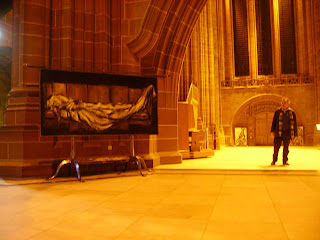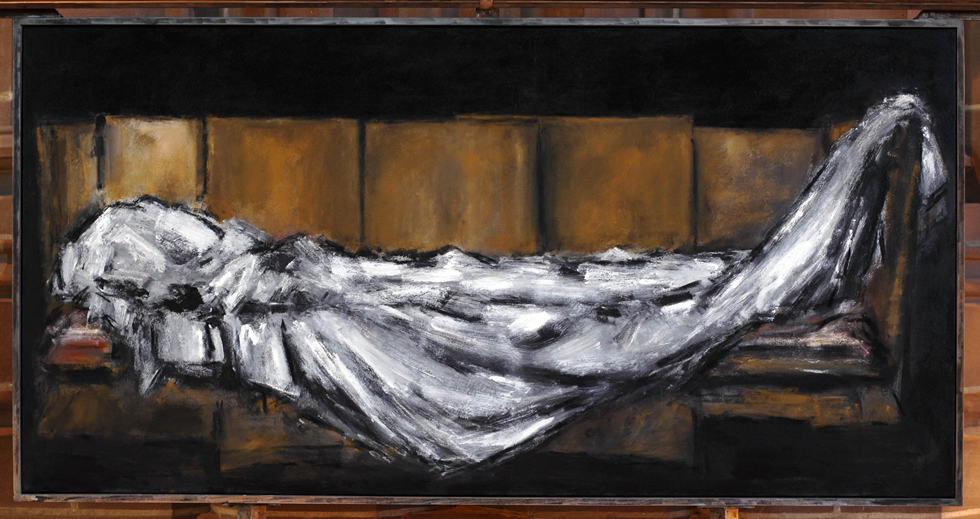The Stations of The Cross at Liverpool Cathedral
The Stations of The Cross: The Captive Figure at Liverpool Cathedral for Captial of Culture celebrations.
 The Stations return to Liverpool Cathedral for Capital of Culture with a the recently completed painting ‘The Empty Tomb’ – which is the culmination of the series.
The Stations return to Liverpool Cathedral for Capital of Culture with a the recently completed painting ‘The Empty Tomb’ – which is the culmination of the series.
The Stations are on view from February 11 to March 30, 2008. The Empty Tomb will play a central role in the Cathedral’s Easter celebrations when it is unveiled by the Bishop of Liverpool during the Easter Sunday Service.
Ghislaine Howard spent a number of early mornings walking the city streets of Liverpool sketching and photographing the spaces vacated by rough sleepers. These empty doorways, tousled blankets, and damp cardboard boxes the only evidence that someone had found shelter there. Her purpose was to situate her painting of The Empty Tomb in the reality of the lived experience and to bring to this spiritual subject a simple human dimension. The resulting painting, 4 x 8 feet, is set within a spectacular steel reliquary created by sculptor Brian Fell and is the culminating piece of her series Stations of the Cross: the Captive Figure.
A series of studies for The Empty Tomb is to be shown in conjunction with the main exhibition.
The series has toured various British cathedrals to great acclaim. When it was shown at Gloucester Cathedral, Her Majesty the Queen was presented with a study for The Women of Jerusalem for the Royal Collection.

It is fitting that this powerful and thought-provoking exhibition should follow the Cathedral’s recent Anne Frank exhibition for they speak of the disappeared, the dispossessed and the homeless, those undergoing unfair captivity and worse – above all they speak of the strength of the human spirit to transcend oppression.
These significant and powerful works open up opportunities to highlight and explore the issue of torture and the plight of victims of oppression all over the world. And as one of many visitors seeing the paintings wrote in response to the works: “It hurt my heart. I pray that we learn from this suffering.”
Dan Jones, Head of Education for Amnesty International:
“Ghislaine Howard’s images are compelling, powerful, and emphatic. They are unusual in that they communicate man’s inhumanity to man to the art lover and lay person alike. These are very important paintings that transcend the limitations of the gallery space to speak to us all.”
 Dr Helen Bamber (former director of the Medical Foundation for the Care of Victims of Torture):
Dr Helen Bamber (former director of the Medical Foundation for the Care of Victims of Torture):
“Ghislaine Howard’s Stations have a passionate roughness that calls out to the viewer the meaning of Christ’s suffering. They seem sublimely right for the pain and confusion of Christ’s Passion.”
Sister Wendy Beckett:
“Howard is well on her way to becoming one of the great humanist artists of our time.”
The Stations have been featured a number of times on television, most recently in BBC1 documentary, Who Do You Say I Am?, and were the setting for a major new production of Sir Peter Maxwell Davies’s Vesalii Icones, to celebrate his seventieth birthday.
Death’s Broken Dominion (PDF) – Laura Gascoigne on The Empty Tomb
(The Tablet, March 22, 2008)